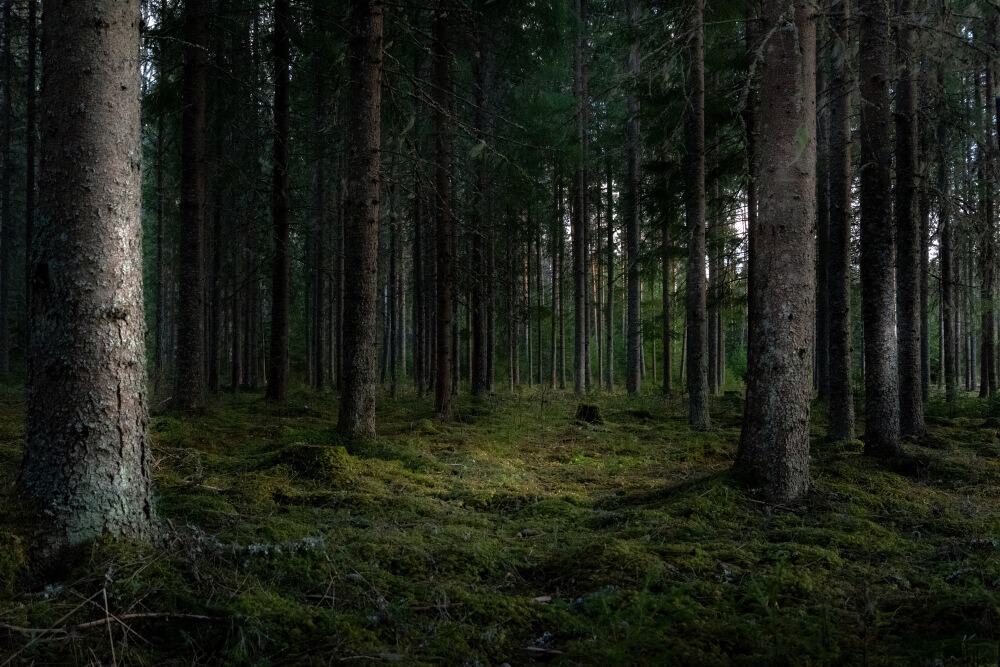We all have a responsibility to conserve the environment and protect all life. Not only is the natural environment very beautiful, but humans are also completely dependent on it for food, clean water and air.
However, despite the fact that an increasing number of people today understand the urgency of environmental conservation, a larger group remains preoccupied with rapid economic development.

Driven by materialism, luxurious lifestyles and profit-centered motives, this majority often neglects the environmental costs of their actions aggravating the environmental crises we face today.
If we continue to Ignore the need to conserve the Environment, more natural habitats across the world will cease to exist. Tipping all life, including ourselves into serious decline.
As nature lovers, we at the Zamaani Inspire Foundation, through the “Go Green Initiative” aim to collaborate with the local government in Kanungu District to get various community groups and schools involved in environmental conservation activities. We plan to plant up to 10,000 trees within the first year of project implementation.
Through carbon sequestration, tree planting and forest conservation help regulate the global impacts of climate change.
By raising environmental awareness and encouraging active community participation, we aim to restore degraded landscapes.
What is Environmental Conservation?
Environmental conservation refers to all the efforts made by individuals, the community, governments and NGOs to preserve and protect the earth’s natural resources and ecosystems.
Environmental conservation encompasses multiple disciplines including biology, ecology and environmental science.
“John Muir” and “Gifford Pinchot” ‘s work emphasized the importance of preserving forests, wildlife, and water sources for future generations. Their efforts laid the ground work for modern conservation efforts.
Here’s why we should Plant Trees to Conserve the Environment.
Trees have always been essential for all living things.
However, deforestation driven by industrial growth and consumer demand continuously threatens their existence. Planting more trees is an important step toward mitigating climate change, improving public health, and enhancing biodiversity.

The benefits of trees include;
Improving Air Quality.
Trees serve as natural air filters. They absorb and reduce the concentration of harmful pollutants such as nitrogen oxides, sulfur dioxide and particulate matter in the atmosphere.
In densely populated urban areas, where pollution from transportation and industry is extensive, studies have shown that trees can reduce particulate matter levels by up to 24% within their immediate vicinity.
Through their leaves and bark, trees capture and trap harmful particles, which are subsequently washed away by rain, leading to cleaner air. Additionally, trees contribute to cooling the environment by providing shade and releasing moisture through a process known as transpiration. This not only helps lower temperatures but also creates a more comfortable micro-climate.
Carbon Sequestration.
Each mature tree can capture and sequester approximately 48 pounds of CO₂ annually, positioning them as some of the most effective natural carbon-capture mechanisms on the planet.
Through the process of photosynthesis, trees convert CO₂ into organic matter, effectively removing it from the atmosphere and storing it in their trunks, branches, leaves, and roots.
By sequestering carbon, trees play a crucial role in mitigating the impacts of climate change, helping to stabilize global temperatures and reduce the severity of climate-related events.
Protecting existing forests and engaging in reforestation and afforestation efforts can significantly enhance our capacity to combat climate change.
Flood and Erosion Control.
Trees serve as natural barriers that help stabilize soil and manage water flow. The extensive root systems of trees anchor the soil, preventing erosion and reducing the risk of landslides, particularly in hilly or mountainous regions.
By slowing down water absorption and promoting gradual infiltration, trees help mitigate the impact of heavy rainfall and reduce surface runoff.
A single mature evergreen tree can capture and store up to 15,000 liters of water annually. This capacity not only protects the surrounding soil from erosion but also helps maintain groundwater levels, which is vital for sustaining local ecosystems.
By planting trees in vulnerable areas, communities can significantly enhance their resilience against natural disasters such as floods and landslides.
Tree planting is therefore crucial for disaster risk reduction strategies.
Enhancing Biodiversity.
Forests are home to approximately 80% of Earth’s terrestrial plants and animal species. Within these rich environments, a single tree can provide habitat and sustenance for hundreds of organisms, including insects, fungi, mammals, and various plants.
These organisms, in turn, support trees by dispersing seeds, controlling pests, nutrient cycling and maintaining ecological balance.
The diverse interactions among tree-dwelling species foster resilience against environmental changes and disturbances. For example, certain insects help pollinate flowers, while others serve as natural predators to harmful pests, thereby supporting the trees’ growth and longevity.
Reforestation efforts are particularly important for restoring habitats that have been lost due to deforestation and urbanization.
Economic and Societal Benefits.
Forests are not only vital for environmental health but also play a significant role in the economy and well-being of communities around the world.
Approximately 1.6 billion people depend on forests for their livelihoods, engaging in activities such as logging, non-timber forest product harvesting, and ecotourism. The forestry industry alone employs millions, providing jobs that support families and stimulate local economies.
They enhance mental health by creating serene environments that reduce stress and anxiety. Research has shown that spending time in green spaces can lead to improved mood and overall psychological well-being.
Additionally, green spaces foster community interaction by offering recreational opportunities such as parks, trails, and gardens. These areas encourage physical activity and social engagement, contributing to healthier lifestyles and stronger community bonds.
Conclusion.
Now is the time for us to step up to restore what has been lost, redefine our relationship with nature and help conserve the Environment.
With such a wide range of benefits, it’s clear that combating deforestation and replanting forests are critical tasks today and for many decades to come.
By prioritizing tree planting, we can enhance human well-being and effectively combat the most pressing challenges posed by climate change.




